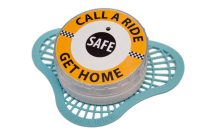Most people are afraid of getting a DUI and for several good reasons: a criminal record, jail time, hefty fines, loss of driver’s license and increased insurance rates, just to name a few. But as strong as these disincentives are, people still drink and drive in great numbers. And when they are caught, these people often think of creative ways to try to beat the breath test machine in hopes of avoiding a dreaded DUI conviction.
One of the most common urban legends as to how to do this involves sucking on a piece of charcoal. The theory behind this is that the charcoal briquette will absorb the alcohol in your breath and in that way fool the machine into a lower breath alcohol reading. Unfortunately, this method appears to have been debunked. Even having several pieces of charcoal in one’s mouth while the test is being administered appears not to have the desired effect.
Another popular theory is that you can beat the machine by sucking on a copper penny. The idea is that the copper would interfere with the machine by causing it to display an absurdly high reading. Some people have made similar claims as to the effect of sucking on a battery.
Alas, these too seem to be more fiction than fact. Most pennies in circulation today actually contain only a very small amount of copper. And regardless of what you are planning on sticking in your mouth, Washington’s standard breath test procedure involves police checking the suspect’s mouth and then waiting a 15-minute observation period before administering the test on a BAC Datamaster machine. That is enough time so that the machine will operate effectively regardless of what you had in your before the officer started his observation period.
Although I have never read about this theory anywhere, I was once told by the grandmother of a prosecutor here in Vancouver that she worked for many years as a Los Angeles County Sherriff’s Deputy and in her experience you could beat a breath test by eating a paper bag. Although I have not been able to find any articles rebutting this claim, I think one would be very ill advised to rely on it. I suppose the theory is that bag would soak up the alcohol. However, some years ago an Alberta man tested a similar theory when he was arrested for DUI by eating his underwear in the backseat of the police car. The results were not favorable.
Given the limited success of all these methods of beating a breath test machine, the best practice would probably be to remember not to drink and drive. The State of Michigan apparently agrees and recently started an innovative program to aid at least its male drivers in remembering this. They have begun distributing special high-tech urinal cakes that, when “engaged,” play a friendly message in a woman’s voice suggesting that the user call a cab.
While I really enjoyed this last idea, I was disappointed that the article did not state what precisely the recording says to convince the intoxicated urinator to get a cab. If you have a suggestion, post your idea on my Facebook wall. And if you have any more questions about DUIs or any other criminal charges, please feel free to contact me through my website.


